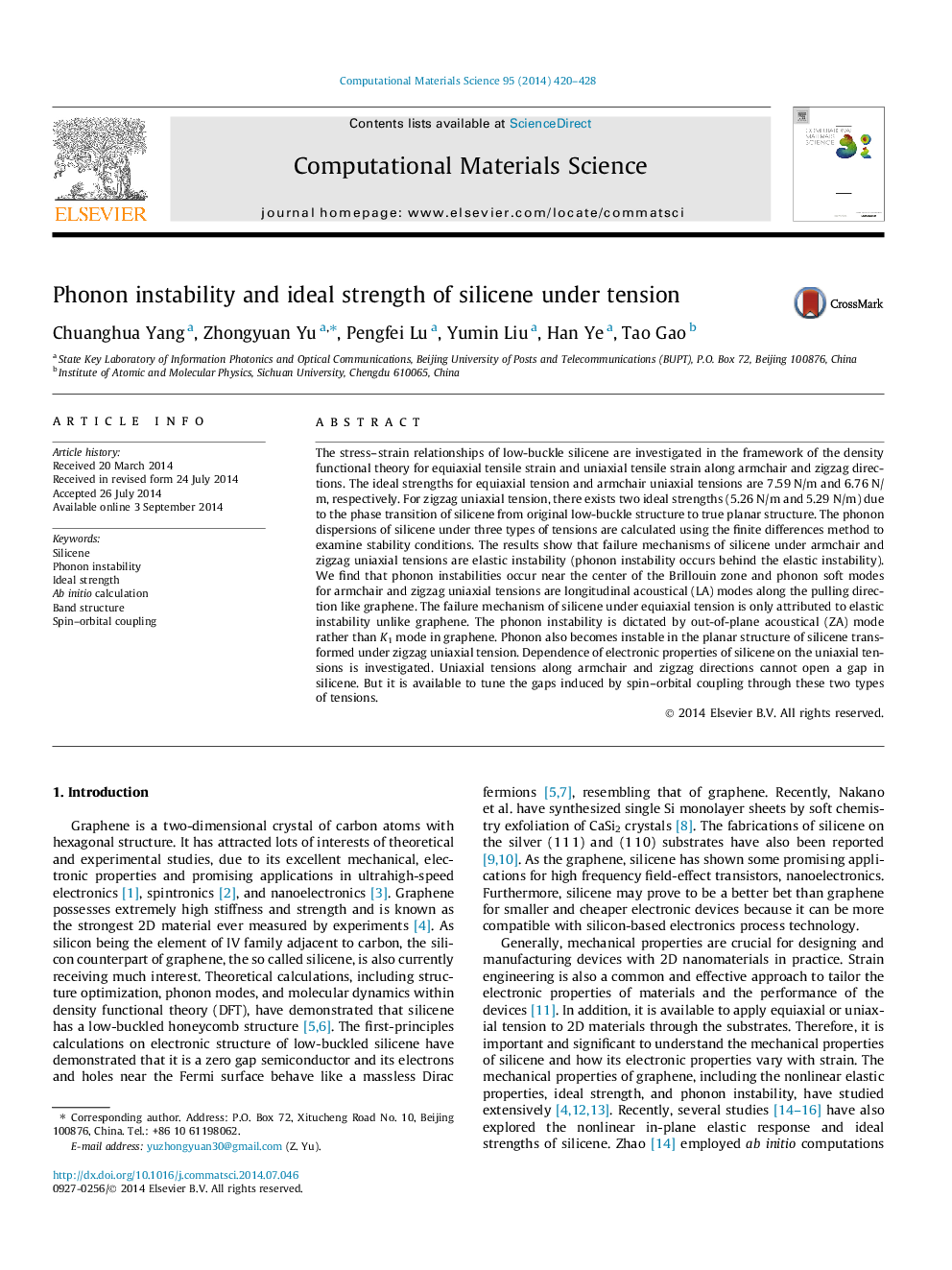| کد مقاله | کد نشریه | سال انتشار | مقاله انگلیسی | نسخه تمام متن |
|---|---|---|---|---|
| 1560664 | 1513914 | 2014 | 9 صفحه PDF | دانلود رایگان |

• We study the ideal strength and phonon instabilities of silicene under tensions.
• The failure mechanisms of silicene under tensions are elastic instability.
• Phonon instabilities of uniaxial and EQ tensions result from soft LA and ZA modes.
• The zigzag uniaxial tension makes buckle silicene to planar silicene.
• All the three types of tensions cannot open a gap in silicene.
The stress–strain relationships of low-buckle silicene are investigated in the framework of the density functional theory for equiaxial tensile strain and uniaxial tensile strain along armchair and zigzag directions. The ideal strengths for equiaxial tension and armchair uniaxial tensions are 7.59 N/m and 6.76 N/m, respectively. For zigzag uniaxial tension, there exists two ideal strengths (5.26 N/m and 5.29 N/m) due to the phase transition of silicene from original low-buckle structure to true planar structure. The phonon dispersions of silicene under three types of tensions are calculated using the finite differences method to examine stability conditions. The results show that failure mechanisms of silicene under armchair and zigzag uniaxial tensions are elastic instability (phonon instability occurs behind the elastic instability). We find that phonon instabilities occur near the center of the Brillouin zone and phonon soft modes for armchair and zigzag uniaxial tensions are longitudinal acoustical (LA) modes along the pulling direction like graphene. The failure mechanism of silicene under equiaxial tension is only attributed to elastic instability unlike graphene. The phonon instability is dictated by out-of-plane acoustical (ZA) mode rather than K1 mode in graphene. Phonon also becomes instable in the planar structure of silicene transformed under zigzag uniaxial tension. Dependence of electronic properties of silicene on the uniaxial tensions is investigated. Uniaxial tensions along armchair and zigzag directions cannot open a gap in silicene. But it is available to tune the gaps induced by spin–orbital coupling through these two types of tensions.
Figure optionsDownload as PowerPoint slide
Journal: Computational Materials Science - Volume 95, December 2014, Pages 420–428